
I am not sure quite how many patron saints of beer there are, but Gambrinus is high on the list. The historical accuracy of the notion that he was taught to brew by the Egyptian goddess Isis and, in turn, introduced brewing to Bavaria seems something of a stretch to me.
What was not a stretch, however, was the well-documented role of Josef Groll in developing the latter-day brewing traditions of Czech pilsners. ‘Twas he who traveled to England to discover how to make great pale malts and thence to Bavaria to ‘spirit away’ a few good brewers (and their yeast). Voila. Or should I say “tady je”?
Germination Process
Groll certainly realized that a great malt is at the heart of great beer. And to ensure a good malt with all the properties needed for brewing, it demands good barley, which must be alive and able to be sprouted in the malthouse, a process we called germination.
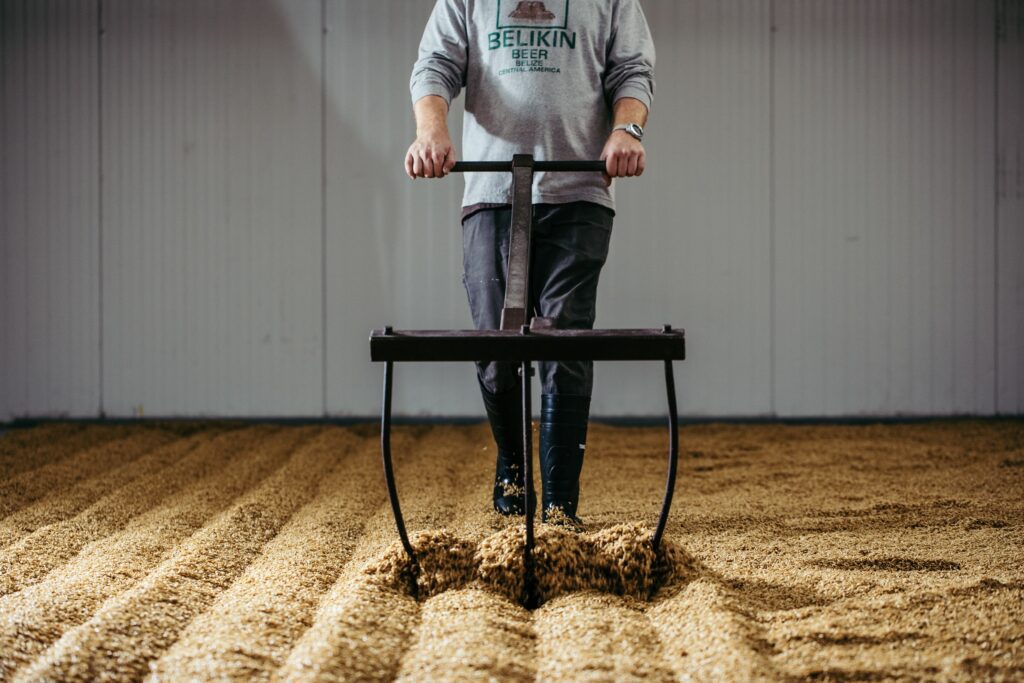
Germinative Tests
To test whether the barley is alive, the maltster uses the so-called germinative capacity test. Some of the grain is mixed with hydrogen peroxide in a small dish and if the barley starts to grow in three days it is viable (alive).
The maltster also has another tool — the germinative energy test. This is a check for whether barley is dormant or not. Dormancy is a natural condition in all seeds and is a protective mechanism to prevent the seed from sprouting too soon. Imagine that the grain is waving there in the field and the heavens open with rain. If there was not something to stop it, that water would get into the seed and “convince” it to start sprouting. But that would be too soon: the mother plant does not want its offspring to start growing when still attached, but rather when the seed has left the plant and found its own bit of dirt. This dormancy only tends to occur when barley is grown in cool, damp places like Northern Europe. It tends not to be an issue in North America — but is still checked by the germinative energy test, in which the grain is mixed with a little water to see if it will grow. If it will not grow then it might as well be dead, because it will not make malt in the malthouse. The maltster must store the barley until it naturally recovers from this dormancy.
Scientists still do not know the underpinning science that impacts this phenomenon. It may have something to do with the levels of the plant hormones in the barley, the main ones of which are called gibberellins.
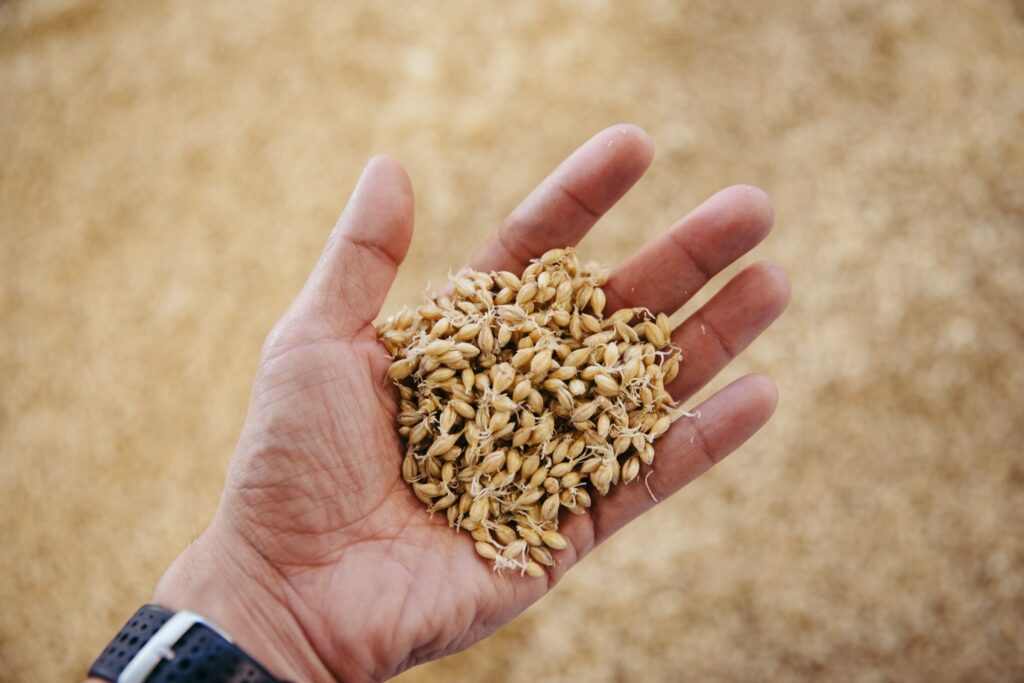
Go Green
Assuming the barley is alive and not dormant then the maltster is able to process the grain, which starts with steeping of the barley and then a controlled sprouting (germination). After 4 or 5 days the product is green malt (that would be “green” as in un-refined in just the same way that green beer is not something that you might get on St Patrick’s Day in Chicago, but the newly fermented beer that has not been matured).
Germination Phase One
In the germination phase one of the key occurrences is the digestion of much of the protein in the grain, converting the insoluble storage proteins (the gliadins) into soluble forms. In wheat these proteins include the gluten. Whether from barley or wheat, these are the proteins that some people are sensitive to — hence the interest in beers that have had the problem protein removed.
One protein that we most definitely do not want in beer is the one that can come from Fusarium, a mold that can contaminate the grain in those cold, wet places I referred to earlier. This protein causes beer to gush, which it is when the foam comes bursting out of the can or bottle as soon as you open the container. Nasty business. Very galling.
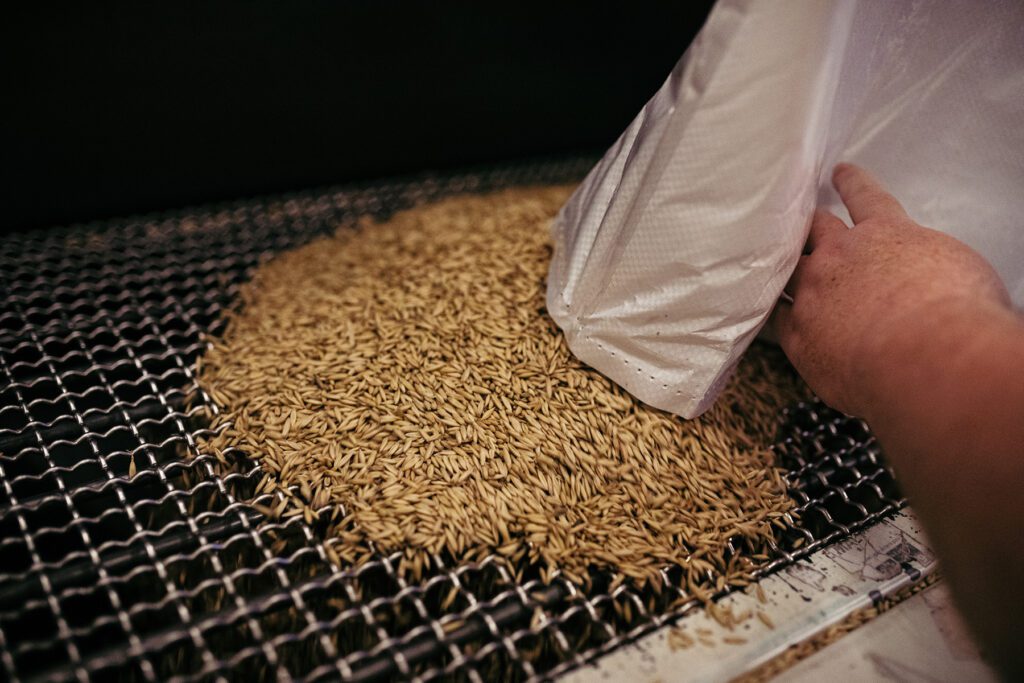
Grist to the Mill
The germinated grain is dried and stored and then it is ready for brewing, the first stage of which is milling. The stuff that we are going to grind is called the grist, hence the ancient saying “grist-to-the-mill.”
Some brewers use adjuncts as alternative sources of carbohydrate. Often these are in a de-germed and pre-milled form known as grits. Alternatively, the brewer may add specialty malts, including very heavily roasted ones. These need to be milled in the brewery. A good example would be the roast barley that is so important to afford the intense color and rich character in beers like Narwhal Imperial Stout.
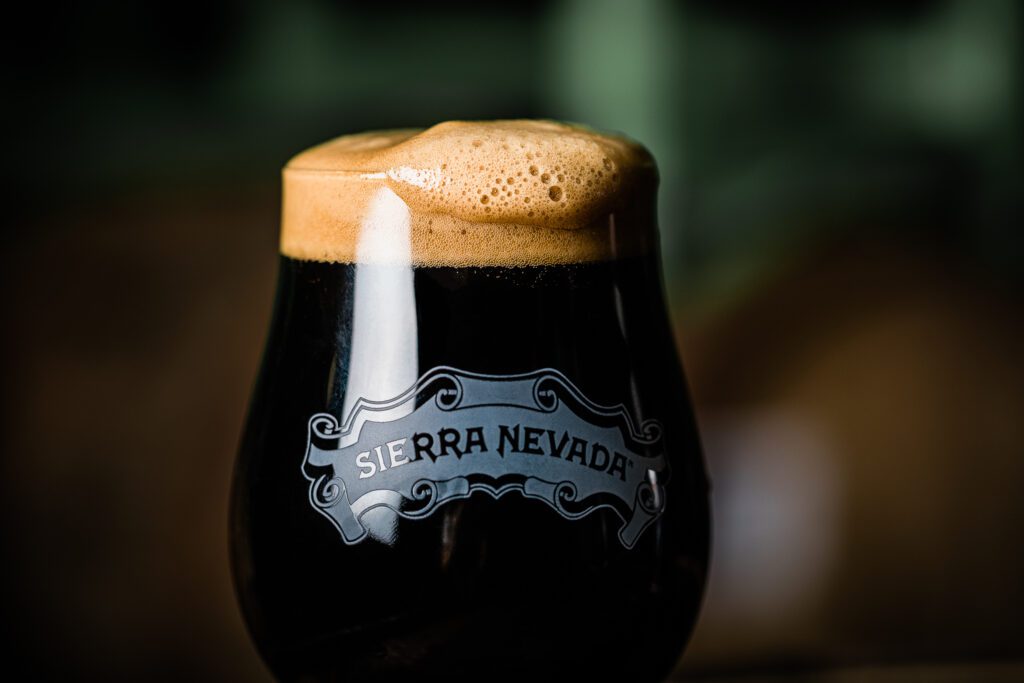
Gelatinizing the Starch
The milled grist is mixed with hot water in mashing, in which process the starch from the malt is converted into sugar. The main sugar produced is maltose, which consists of two glucose units linked together. The production of sugars depends on the enzymes that break down the starch, but to be able to work the starch needs first to be “melted” by heat and converted to a pasted form. This process is called gelatinization. (Think of cooking cereal dishes in the kitchen, for example porridge oats. You can see the gelatinization in action in the pan.)
Now of course we are going to boil the wort that we recover from the mash. These days brewers all over the world add hops at this stage. There was a time, though, in Europe when the wort was spiced using gruit, which were blends of herbs and spices to give different flavors. A blend might include things like rosemary, nutmeg, ginger, caraway, coriander and much more.
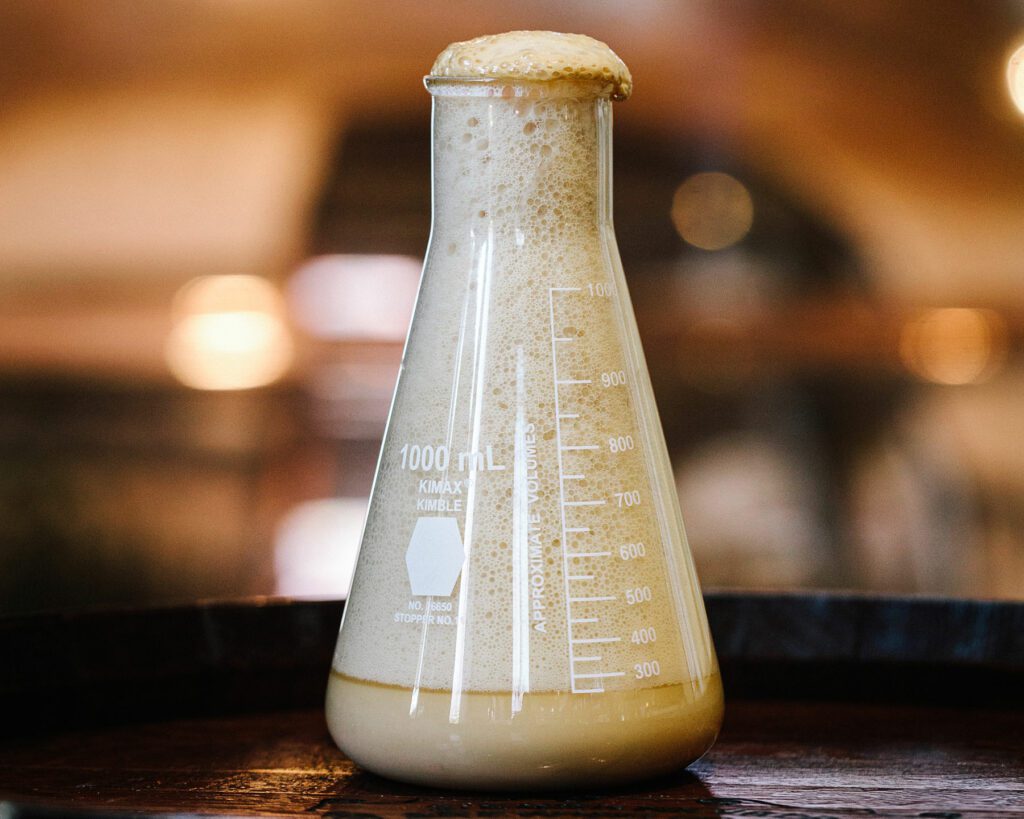
After cooling we will ferment the wort using yeast. That yeast needs to be healthy, one indicator of which is whether it has large internal reserves of carbohydrate. This material is called glycogen, and it is very much like the starch in cereals.
Of course, not all beers involve just yeast as an active micro-organism. They employ many other fungi as well as bacteria. Most famous of these are the lambics from Belgium. A blend of matured and young lambics packaged in bottles is known as gueuze. Another style to employ lactic acid bacteria is gose, which also has a distinct salty character.
– Charlie Bamforth




